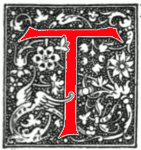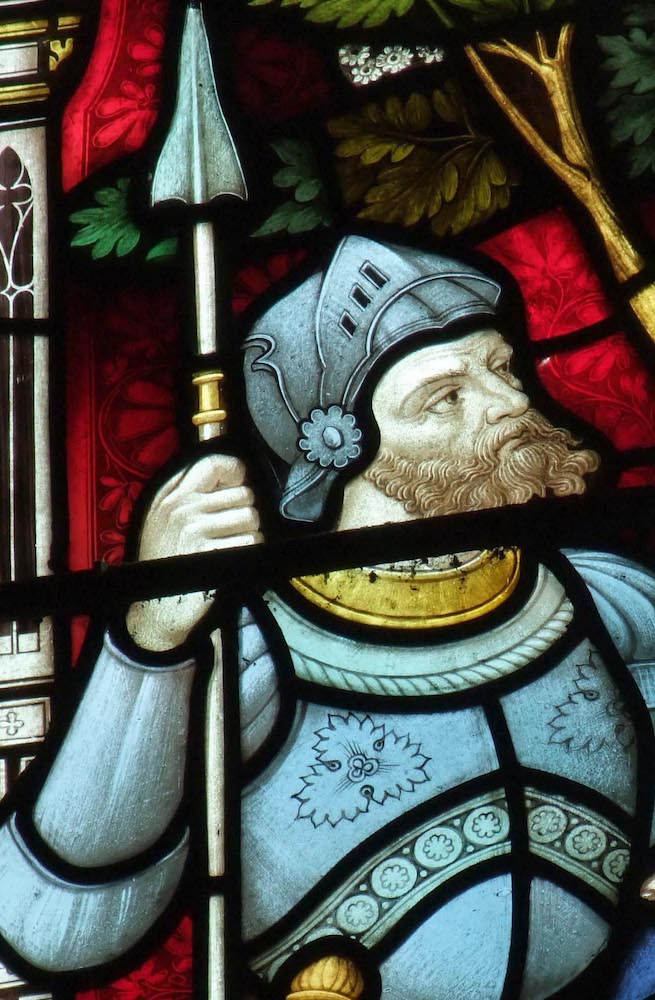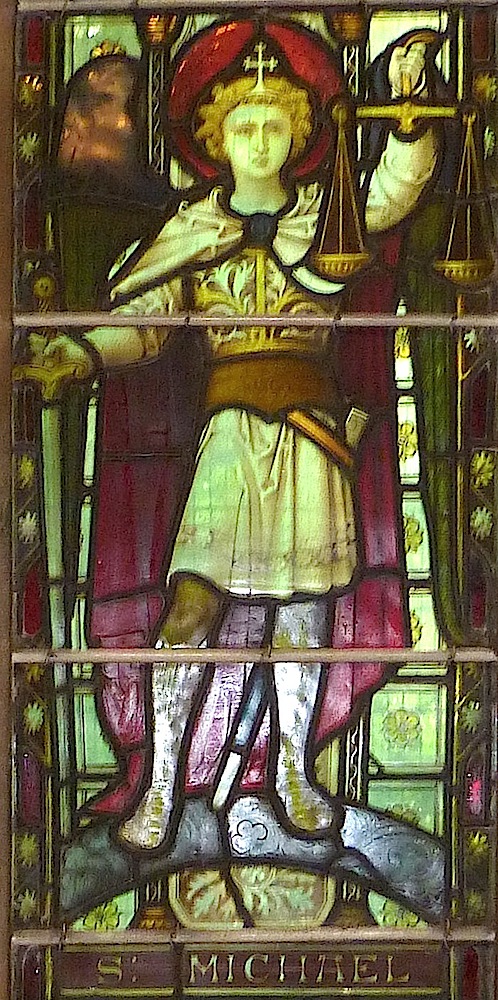
he London stained glass firm of Clayton & Bell was founded in 1855 and continued until as recently as 1993. The founders were John Richard Clayton (1827-1913), and Alfred Bell (1832-95), who entered into a partnership with Clayton in 1856, having previously worked in the studio of George Gilbert Scott. By 1859 these were definitely "the rising stars of Victorian stained glass" (Cheshire 24), and the firm was soon preeminent among the stained glass designers and manufacturers of the time — a time when this glass was in huge demand.

As a large-scale producer, catering to the market for decorative schemes in churches and grand secular buildings alike, the firm has been criticised for over-production: in the mid 1860s, it had 300 employees in its Regent Street workshop ("Clayton and Bell [1855-1993]"). Scott, who had thought very highly of the precocious Bell, was particularly outspoken in his criticisms, feeling that artistic talent had been betrayed here: "No real art can stand against a constant high-pressure and working against time. Some of Clayton and Bell's productions are of a high character, but a large proportion are damaged or ruined by one or both of the influences above-mentioned. Their works are by no means whatever proportioned to their ability." Scott was biased: he particularly disliked the craze for "antiquated drawing," with its "oddness" or even "grotesqueness" (222); "wretched, mawkish attempts at picture-painting" also annoyed him, and altogether he found it positively "vexatious" that Clayton and Bell, "from whom better things might have been hoped, and who have produced fine work" should follow such trends (223). However, the firm retained its position, and from what can be seen even in local parish churches which commissioned work from them later on, there was a return to form in the last decades of the century, as it passed into the hands of the next generation. — Jacqueline Banerjee.
Biographical background and discussion
Ecclesiastical work: individual windows
- St Christopher's Chapel, Great Ormond Street Hospital, London
- North aisle west of St James' Church, Weybridge (St Peter with St James and St Catherine)
- Cornish Miners Working at Dolcoath
- Henry White Memorial Window, Queen's Chapel of the Savoy
- The Ascension, St Alban's, Acton Green, London
- East window (Scenes from the Life of Christ), Bangor Cathedral, N. Wales
- King Athelstan, St Edith and St John of Beverley, St Edith's. Bishop Wilton, E. Riding
- The Three Magi, St Mary, Lapworth, Warwickshire
- Christ in Majesty, St Mark, Hamilton Terrace, London NW8
- St Michael and the Dragon, Grace Church (Episcopal), Amherst, MA. (USA)
Romsey Abbey, Hampshire
- The Crucifixion, Romsey Abbey, Hampshire (stylistic attribution)
- The Nativity, Romsey Abbey, Hampshire (stylistic attribution)
- (Former) Great West Window, Romsey Abbey, Hampshire

St Andrew's, Heslerton, Yorks.
- The Three Maries at the Tomb, and the Resurrection of Christ
- The Entombment
- Noli Me Tangere and the Ascension
- The Nativity
- Christ as the All-Mighty
- St Patricius (St Patrick)
- St Raphael
St Andrew's, Weaverthorpe, Yorks.
St Augustine's, Kilburn, London, NW6
St John the Baptist, Holland Road, Kengington, London
- St Agnes (detail) (probable)
- Christ the High Priest, Christ the Judge, Christ the King of Kings (probable)
- Christ the Man of Sorrows, Christ Ascending, Christ the Lord of Life (probable)
St Mary's, Sunbury
- The Annunciation to Mary, The Angel comes to the Shepherds, The Gifts of the Magi, and The Presentation of Jesus in the Temple
- Christ and the Doctors and Suffer Little Children
- The Last Supper and Feeding the Five Thousand
- Christ's Baptism and The child Christ helping in Joseph's carpentry shop

St Matthew's, Ashford, Surrey
- The Visitation; the Baptism of Christ, St Matthew's, Ashford, Surrey (stylistic attribution)
- St Michael, St Matthew's, Ashford, Surrey (stylistic attribution)
- The Crucifixion; The Resurrection, St Matthew's, Ashford, Surrey (stylistic attribution)
St Michael's, Cornhill, London
St Peter's, Bournemouth
- East window (designed by G. E. Street)
- East window, Keble Chapel (in this church)
- Founder's Window
- Te Deum window
- Revelation window
- West (Nativity) window
- St Peter in Acts of the Apostles
- Minstrel Window
- Covenant Window
- St Peter, St John, St Andrew and St James the Greater
- St Philip, St Thomas, St Bartholomew, St Matthew
- St James the Less, St Simon, St Jude and St Matthias
St Peter's, Hersham, Surrey
- East window
- West window
- North Aisle (1) window, The Raising of Lazarus
- North aisle (2) Miraculous draught of fishes
- North transept east, Jesus with St Peter
- South aisle (1) St Peter cures the crippled man
- South aisle (2) St Peter's denial of Christ

Secular work
- A Swiss Summer Landscape, Two Temple Place, London WC2
- Roundels in the McManus: Dundee's Art Gallery and Museum: Robert Burns
- Roundel in the McManus: Dundee's Art Gallery and Museum: Sir Henry Raeburn
- Roundel in the McManus: Dundee's Art Gallery and Museum: James Watt
- Jacob's Dream and The Chess Players (untraced), formerly in Ardmiddle House, Aberdeenshire, Scotland
Bibliography
Cheshire, Jim. Stained Glass and the Victorian Gothic Revival. Manchester: Manchester University Press, 2004.
"Clayton and Bell (1855-1993." Stained Glass in Wales. Web. 9 July 2014.
Scott, G. Gilbert, ed. Personal and Professional Recollections of the Life of Sir George Gilbert Scott, R.A.. London: Sampson Low, Marston, Searle & and Rivington, 1879. Internet Archive. Uploaded by the University of Michigan. Web. 9 July 2014.
Created 9 July 2014
Last modified 2 December 2023